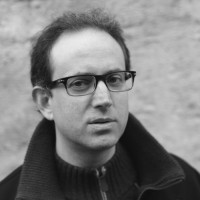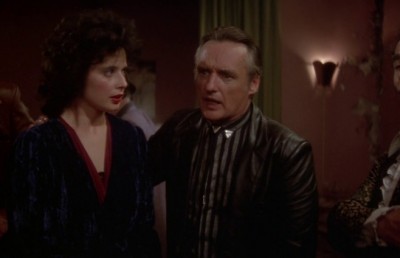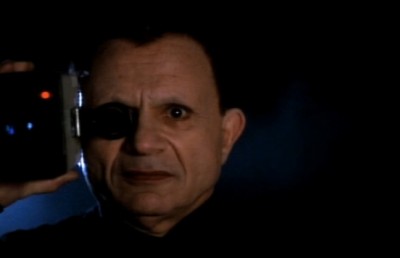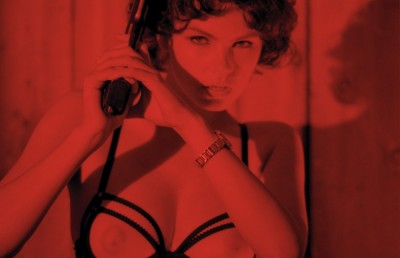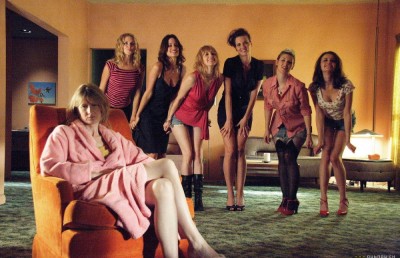Roundtable on David Lynch’s Inland Empire, Part 2
Light, Sound and Politics
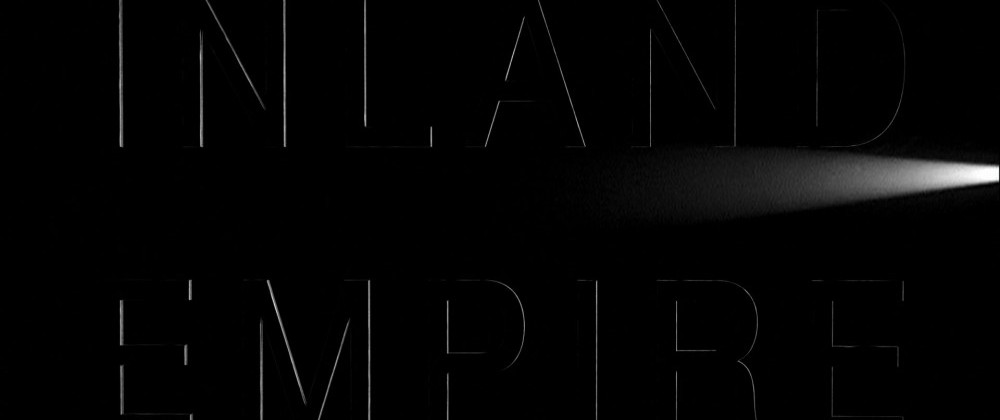
The roundtable discussion continues…..
LIGHT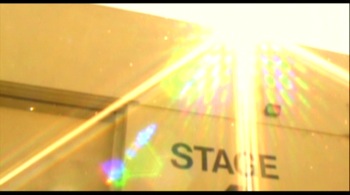
Randolph Jordan: Peter, earlier you mentioned [the idea of a] “text of light.” Were you making reference to the Brakhage film?
Peter Rist: Well, no, I didn’t mean that, but that he’s using light as a text. That was one of the things that I didn’t see so much of later in the film. I don’t know if you had something to say about that.
RJ: [The light] comes back at the end. It’s set up at the beginning and I think the first five minutes are some of the best…
PR: [One example] is in the scene when the Grace Zabriske character comes into the house. It’s so bright outside and it seems to me that you’ve got this feeling of the light sort of burning the image which is normally a bad thing because it’s like we don’t have a good enough projector to project that DVD so all the light goes missing.
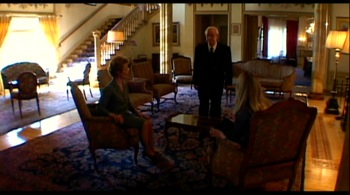
But I think here it was very deliberate. But I’m not exactly sure what he was doing with that. But anyway there were lights on the set as well and you get that sense there as well.
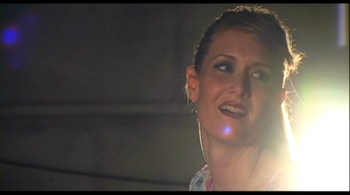
Donato Totaro: Yeah, the light right behind Laura Dern when she’s sitting [on set] between takes. And there are also a couple of scenes where you see the cigarette burning into a kind of cheese cloth effect and the camera moves into it.
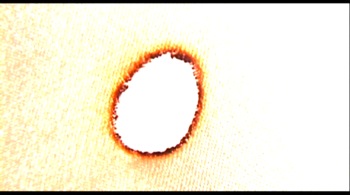
This is another thing that relates to other Lynch films is that there are all these interjections into the void, into spaces that lead to other spaces. Although here it doesn’t seem to lead into another space as it does in some of his other films, I find, but he still did do that quite a few times, that kind of idea about the void that is engulfing you visually but also aurally, the sound begins to change as well that way.
PR: Also with non-HD video, with what he was using, when you’re in dark areas, they are really indistinct, you can’t pick out details in there, whereas if he was shooting that on film you would see things in the darkness. And again we tend to think it’s a bad thing, “oh well that’s terrible, the image is bad,” but he’s kind of using that to build this opposition between darkness and light. That isn’t to say that light is good, but the light is sort of blinding you and then darkness you can’t see properly. So yeah, in that same scene where they’re hearing the noise back stage and go looking for the person, you really get this sense of darkness in the background, the back of the set is very dark.
RJ: Aesthetically, my favourite aspect of Lost Highway is the first 40 minutes when Bill Pullman is getting lost in his own house, and there’s a lot of that same thing going on in Inland Empire. Whereas that’s not going on so much in Mulholland Drive. Of course that’s very specific taste on my part. But the way that he can have people sort of moving in and out of the shadows, which I think is very much a tribute to Wedlock House by Stan Brakhage, with the couple moving in and out of the shadows in the spirit of domestic tension, I really think that Lost Highway pays direct homage to that, which continues in Inland Empire.
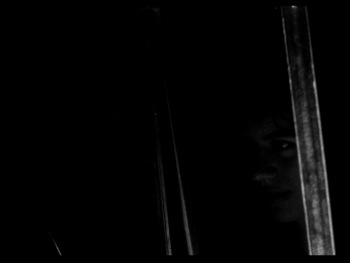
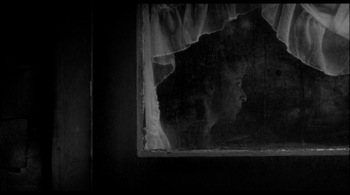
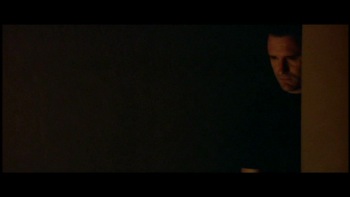
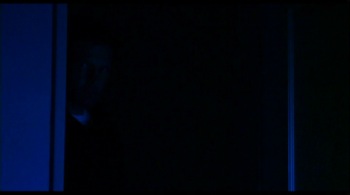
And when you think of the Brakhage film, you’re not worrying so much about the narrative or anything, it’s really about the mood. This couple is having some marital tension, the house is dark, there are these bright lights that people move in and out of, and this atmosphere, it’s what Lynch does very well.
DT: And you don’t know what a cut is and what isn’t, that’s what I like about Wedlock House. [Lynch uses the relationship between light and montage here in the same way]. The first time we’re introduced to the Dionysian women, the eight women who shift from being cheerleaders to hookers, the first time we see them that room is like shifting with light and we’re introduced to them individually in these patterns of shifting light.
RJ: And one of his trademark electrical freakouts announces their arrival. The lamp sputters and you hear that electrical sound that started in Eraserhead, and I think there are examples in each and every one of his films, and then all of a sudden those women are there. Electricity tends to act as conduits between worlds. And he’s done this with the TV screen in his other films, like in Fire Walk With Me.
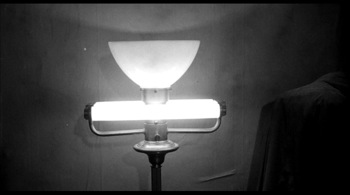

DT: Actually, also, continuing that idea of electrical [disturbance] is the strobing effects that you have in this film as well. That one great one you have at the end, I guess it’s achieved by the camera moving quickly and the lights strobing…
RJ: …when she’s sitting in the chair and the women are dancing behind her but it’s very intense and she starts freaking out and at one point it looks like she has an inverted contact in one of her eyes, it was very bizarre.
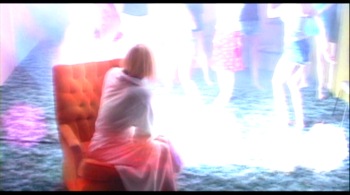
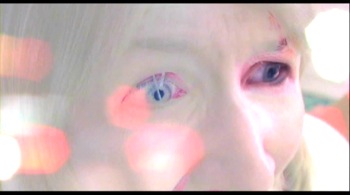
DT: It’s like you’re seeing the electrical force field kind of, because you can see the strobing effect of the light.
RJ: Yeah, that was a great scene.
DT: The use of light in this film also seems connected to the use of sets. I just found at some point I was reading all the different sets as a kind of reflection of where she was, or her state of mind, you know, like when she was being interviewed by that character who
was either a cop or a mafia guy or whatever, like that was kind of her very tough, rough, aggressive woman alter ego. And then in other spaces when the light was a bit softer, she’s more passive, she’s just sitting there looking all the time, whereas in the other one the man is just sitting there looking and listening and she’s doing all the talking. So there are bright rooms where she kind of seems to be more of an open and positive or happy kind of state, although she’s never really happy in the film, but it just seems that the use of light was connecting to the different spaces and how she might have felt, or how her character was moving or feeling.
RJ: And of course the whole thing moves towards her stepping into the light because as she’s dying, the homeless woman on the left holds the flame in front of her eyes and says, “here’s the light and it will shine forever,” and she looks into it.
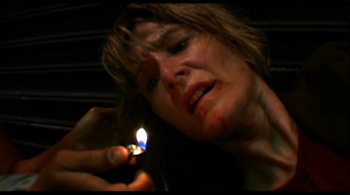
And that’s when we come back to a lot of what you were talking about that we see at the beginning of the film, and some moments when you actually feel like you’re living inside the lens, you can feel the glass of the lens and the reflections and this bright light, and so very much I think light is absolutely a concrete theme, formally and even narratively, in the film.
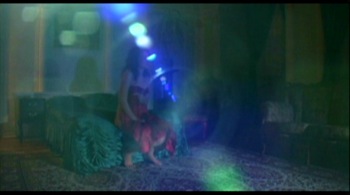
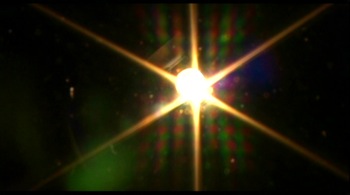
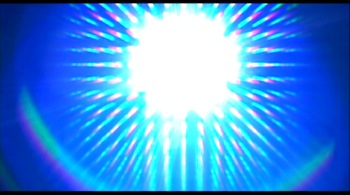
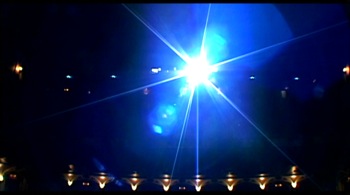
DT: Right because he even uses light in some ways as a signifier. The first time we see the room with the lampshade and the reddish wall and it turns almost red-filtered and we see the light turning on, you see it’s her looking at it and she kind of sees this. And then later on you get this scene where she goes to the farm and the Polish guy walks up with a [red light bulb] in his mouth, and when she sees him you get an interjection of that shot of the lamp, so it’s almost as though she’s made that connection between that lamp and the [bulb] in the guy’s mouth. So it’s a formal connection.
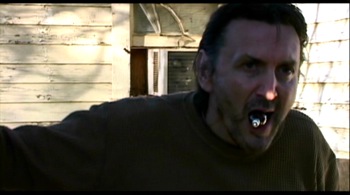
RJ: There’s another moment when you see that same lamp superimposed over an image of Billy which is making another connection so he’s doing that a couple of times.
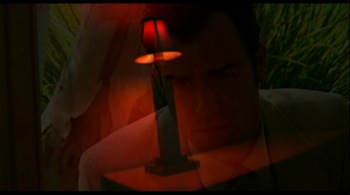
So you have the light connecting spaces.
PR: Yeah, well Laura Dern’s actress character’s house which is very rich is also very spacious, it’s very light, the walls are yellow, gold, and it’s lit very brightly. And then you have the Polish scenes which are opposite, which are really drab and dark, again which is stereotypical, and it’s kind of like when you’re in the film studio you can do one or the other which is kind of interesting. I mean that’s something I’ll certainly look at next time I see the film. There’s a tendency at the beginning of the film to be bright and at the end of the film when she dies on the street it’s very dark, even though that’s Hollywood. So that’s certainly something that I sensed was very sophisticated but I didn’t completely pick up on exactly what he was doing there.
DT: Yeah, I think from a Lynch standpoint, he probably thinks that from the opening scenes, the light is a false sense of a reflection of wealth and a certain social standing. But the scene you described with the Polish setting, it’s maybe cinematographically more interesting, so Lynch probably thinks that’s actually better than in the earlier scenes where it’s meant to be more uplifting.
PR: But when we’re on the street at night, you know when it’s snowy on the Polish street, isn’t it always at night? Do you ever see that during the day?
RJ: I don’t think we do ever see it in the day. Nighttime. But there’s snow…
PR: Yeah, so it’s light. That’s interesting. Things to look for.
SOUND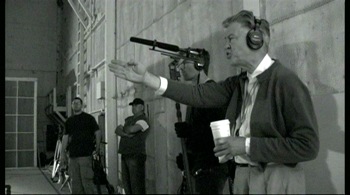
DT: One of the things we haven’t talked about was that this is one of the first films in a long time where he didn’t use Angelo Badalamenti [as composer].
RJ: He didn’t?
DT: No, he’s not in this film at all.
RJ: I guess I just assumed because some of those music cues sound extremely like Angelo Badalamenti.
DT: Well I guess by now Lynch is starting to be influenced by him. But I was just going to ask you what you thought, if you noticed the absence, though I guess you didn’t notice since you felt that he was in there.
RJ: No, I thought for sure he was in there.
DT: I felt there was a lot of ambient stuff in this, I don’t know whether that’s more Lynch than the melodic stuff with Badalamenti.
RJ: Well there has always been this distinction between the score, that Badalamenti does, and Lynch’s sound design, which is often these ambient soundscapes, drones, things that you might think of as music that has been composed, but that stuff isn’t Badalamenti.
And there’s a lot of that stuff here just as there is in all of his films. But here the orchestral stuff, I could swear that there were a couple of things that were Badalamenti, is it possible that he did some work uncredited? But I mean he often does use several composers, like on Lost Highway, there was Badalamenti but then he had some music that was actually composed by Trent Reznor including some soundscape stuff which you wouldn’t call “score,” drones and things like that, and Barry Adamson did some things. And then there’s the music that he brings in from other sources, as he did this time as well, that isn’t composed for the film. And Lynch actually sings this time. That song that plays when the women first arrive, and one of them says “so strange what love does,” you hear this lyric singing “strange,” that’s him singing.
DT: No, that’s not him!
RJ: Yup. And that’s his voice too, Bucky, the gag when Jeremy Irons is telling the guy to raise the lights, that’s Lynch’s voice as well.
DT: And that female vocal [at the beginning], the very angelic voice, that’s not Julee Cruise?
RJ: No, it doesn’t sound like her. But I don’t know who it is for sure.
DT: I was struck by the early scene with Laura Dern and Grace Zabriske, that there was complete [absence of music].
RJ: Yeah, and the sound there seemed very much like the raw location recording. When the camera was further back it sounded like the microphone was further back, and you heard them speaking with more room ambience. And then when they sit down and the camera is right in their face, it’s almost as though they’re using a mic that’s mounted on the camera which you would almost never do, but that might be something that he’s playing with.
DT: So what about the use of the phonograph turntable, I thought you’d pick up on this…
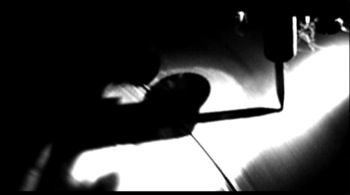
RJ: Oh yeah, I mean that was the main thing I was interested in. Somebody actually emailed me from Belgium who had downloaded my MA thesis which has a chapter on turntables in Eraserhead and Twin Peaks.
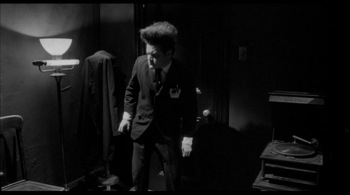

And he was like, “you must have been so excited to see the turntables in Inland Empire,” and this was back in February before the May release in Montreal, and I said, “man I can’t see this movie! It’s not playing in Canada.” So finally I got to see it. Before I continue, were you going to make a point about it?
DT: Well yeah, I think that, I wish I could remember exactly, it appears early in the first or second scene and then it comes back again. I don’t know if there’s a symmetrical balance to it, but I hope there is in terms of where it appears because the idea of the revolution seems important. You have so many different points at which the film keeps looping back on itself, so another way of reading it is that the actual phonograph, the way the phonograph works with all the groves, you move from one groove to the next and to the next, it’s almost like each groove represents a part of Laura Dern’s psyche…
RJ: Except of course the groove is actually continuous. But you can skip…
DT: You can skip, yeah…
RJ: But it’s one line if you want to follow that line.
PR: It’s a spiral.
RJ: It’s a spiral, yeah, but it lends itself to fragmentation which is what the whole DJ thing is about.
DT: So how does that relate to what you talk about in your thesis?
RJ: Well, something that I noticed I think the second time is that when the turntable comes back in the middle of the film, it comes with its pops and crackles and that aesthetic of the sound of the needle, and that sound continues over an entire section of the film which
happens in Poland. The sound is matched by kind of a sepia colour in the image, still of course shooting on digital, but it’s almost as though this old world is supposed to be associated with this older technology. It’s also interesting to think of the phonograph record as encapsulating a period of time and being able to access times past in the present by putting on this old record. So it’s almost like now we’re putting on this old record and are going to travel back to Poland in the past. And in other of his films, like I think Eraserhead but certainly in Twin Peaks, the phonograph has signaled a slippage between worlds, and I think that is also happening here because that second recurrence has a direct connection to a slip between the now of the US and the back then of Poland.
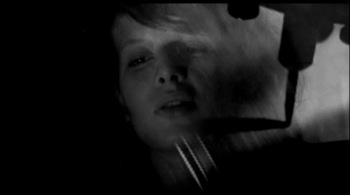
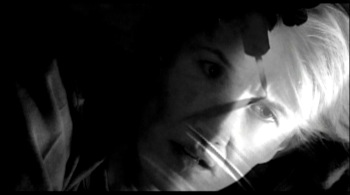
DT: So we see it twice, but we hear it constantly.
RJ: Well, we hear it after the second appearance, then the sound continues for a while. But then I was hoping it would come back every time we go back to Poland, but it doesn’t. So I was a little unsure about how deliberate he was trying to be about that connection.
DT: But I think we also hear the sound the phonograph makes when it gets to the end of the record, I think we hear that quite a few times, and that’s a sound that he seems to re-create in a lot of his other films.
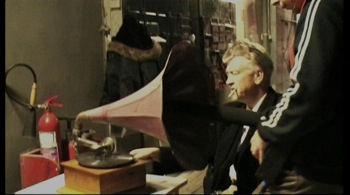
I don’t know how that fits in, because the idea is that if it is reflecting on some kind of narrative or some kind of temporality, then when the turntable stops at that point, the narrative should stop at that point, or the temporality should stop at that point too.
PR: There is an Eastern European connection to that for me which is ??Journey into Fear??…
DT: Right, it begins that way…
RJ: I haven’t seen this…
PR: Oh wow, I mean, whenever this happens, when the record gets stuck, someone gets killed.
RJ: Really! Oh I gotta see this.
PR: Yeah, I mean this is one of the things that you absolutely remember about this film which is like a film noir but it’s set in Eastern Europe, Turkey I think, but this whole sense of the East Europe Gypsy as kind of dangerous, Journey into Fear has that
sense.
RJ: But also about the turntable, aesthetically I believe it’s a reference to Germain Dulac’s Disque #957.
DT: I saw that at the [Women and the Silent Screen] conference here [at Concordia]…
RJ: Yeah, Tom Gunning’s talk. It’s the same thing, you have the record player spinning with these lights flashing on it. I think it’s very deliberate.
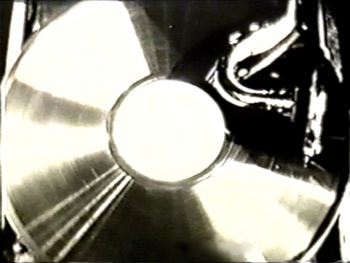
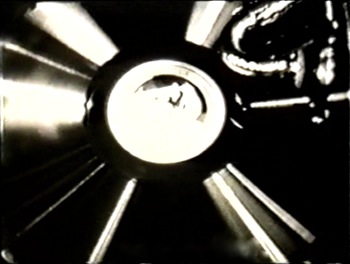
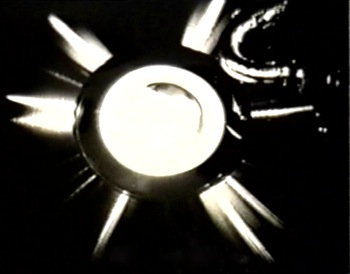
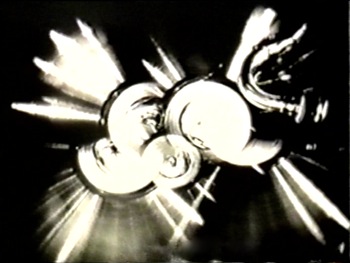
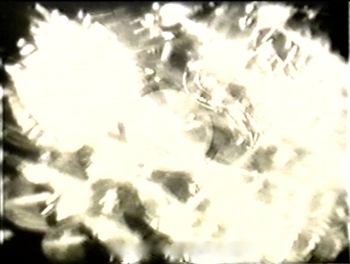
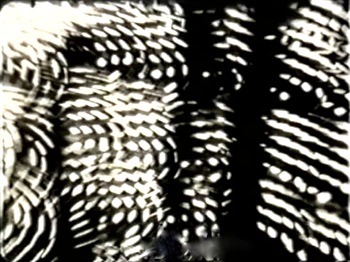
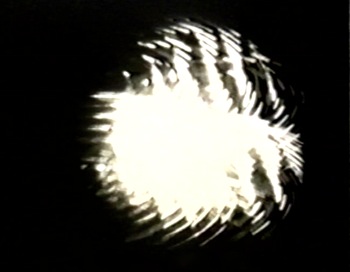
He does this kind of intertextual referencing all the time. I think that in the beginning of Mulholland Drive, that kind of dancing with the silhouettes that against the blue background is very much like Peter Kubelka’s dance film, Arnolf Rainer.
DT: Also in Inland Empire there are sequences where you get that too with the use of superimposition, which is something he does a lot more in this film than in other films, but it’s towards the end where Laura Dern is walking through the corridors, it almost looks
like a ballerina doing a bit of a pirouette.
RJ: Yeah, there’s this spinning in superimposition…
DT: It kind of reminded me of the whole phonographic revolution thing.
PR: But it also has to be old because 78 rpm is a lot faster than 33 rpm. It’s almost like when you get to vinyl and 33 rpm it’s already New World. The Old World is the 78.
POLITICS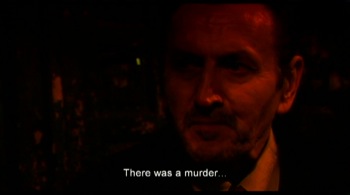
PR: Well I guess the more we get into that aspect of the Old World and New World, and Evil Poland, I had problems with that actually. I would rather the stereotypical representation of the East and Central European as monstrous perhaps not be developed as much as it is. I mean, he was going to Poland to make the film, so he kind of had to use Poland. So the way he’s used Poland works, but it’s limited, I think, because politically it’s old-fashioned.
DT: Yeah, it could have been any Eastern European country.
PR: And that’s the criticism with his sexuality as well. It’s always this old-fashioned heterosexual politics.
RJ: And he can be forever criticized for that, and I totally understand that, and I’m getting more interested in thinking about that. When people used to talk about that stuff I just didn’t care because he’s doing all these other things that I’m so interested in, but of course it is an ongoing situation that needs to be addressed. And in fact a book that I recently reviewed, [called Pervert in the Pulpit by Jeff Johnson], argued that Lynch’s politics are very conservative. He actually builds a fairly strong argument that Lynch is housed within a particularly Calvinist American Christian tradition, and his films rearticulate this over and over again, and nobody pays attention to that because they’re always paying attention to his formal aspects. Johnson acknowledges that the formal aspects of Lynch’s films are great, but he says you have to think about this other stuff too.
PR: But I mean initially you have Eraserhead which is just too weird for anybody to ever think about politics. I mean, other than the idea of what a baby could be…
DT: But it’s still marital tension…
PR: Well, yeah, but then when you get to Blue Velvet, I thought it was a real critique of middle America, and a clever undermining of the safety of middle America, something like Hitchcok’s 1942 film Shadow of a Doubt. So Hitchcock is clearly a conservative, politically, but at the same time he understood what was wrong with middle America – or middle anywhere – in terms of how extremely conservative, and safe, and smug that kind of community can be. So in that sense it’s almost like Blue Velvet is a very dangerous remake of Shadow of a Doubt. So at that time I thought Lynch was a marginally political filmmaker as well as this amazing stylist. I mean the film that put me off him, I know we’re getting away from the thing here…
DT: Wild at Heart.
PR: Yeah, Wild at Heart.
RJ: That’s where most people lose it. And that’s where, and if you’re talking about reflexivity, that’s where people criticize him for slipping into self-parody for the first time – which can be thought of as a reflexive move.
DT: [Back to the Old-World/New-World dichotomy], it’s interesting that we see the Polish prostitute at the beginning of the film and the end of the film; you could almost read the film as though it’s her subjectivity that we’re watching and not Laura Dern’s. Like how does she position herself within the Old and the New worlds? If it is from her point of view then it becomes more sympathetic. It’s a woman who is experiencing this misogynistic behaviour towards her, and at the end she has this sort of reconciliation between the father and the son which almost feels a bit like the Blue Velvet sort of ending.
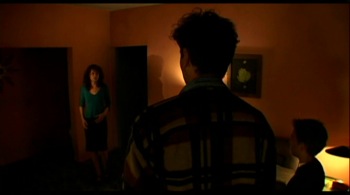
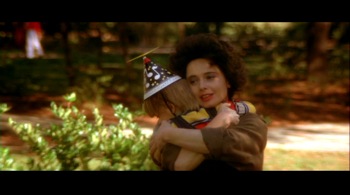
RJ: That’s what I was thinking! Except this time the father is present, right? In Blue Velvet what bothered me is that Dorothy’s husband has been killed and went through this whole ordeal, but at the end she’s happy! So she didn’t give a shit about her husband, she’s just happy to see her son again and can carry on, maybe even for the better without him around. Whereas in Inland Empire, that reunion scene does involve the man as part of the family as well.
DT: So there’s a way to read the Old-World/New-World thing through the point of view of the old rather than the new.
PR: But I definitely don’t like the idea that maybe all men are brutes and dangerous, but Polish men are the worst, they’re REALLY dangerous, you know.
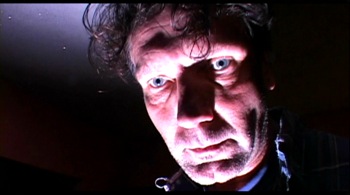
RJ: And all women are whores too.
PR: [Laughs] Yeah. Right.
RJ: And that’s a problem too. But that’s one of the other worlds Lynch develops here in order to conflate with modern-day USA. What is the difference between a married woman at the mercy of her husband who could be like a kept woman, everything paid for, but is also physically at the mercy of this man, what’s the difference between that and a prostitute?
DT: It’s Godard.
RJ – And that’s a theme in the film.
DT: Yeah, in the opening scene where you see this woman in this gorgeous home with the butler and you don’t see the husband, and that’s like, this is what you would see in a classic American film noir. The woman lives in this sort of environment, but he’s just
showing you what is potentially behind that. One way to justify the obvious negative representation of women, or the stereotypical representation of women, is that Inland Empire is really is a film just about Hollywood. I mean at no point in the film is it ever having any pretensions towards any sort of realism at all. I mean even Hollywood realism.
PR: But don’t you think the Polish scenes are relatively realist, at least at the beginning of the film?
RJ: I would say more so, I think.
PR: So is there an attempt to render the Polish story in a European style and not in a Hollywood style or TV style? It seems that the American stuff is either Hollywood or TV. Except maybe the scene in her house in the beginning, you could argue that was relatively realist. It feels like this is her home, this is probably Laura Dern’s house or something.
DT: No, but that early scene is shot in these close-up wide-angle lenses where everything feels threatening. The old woman, right after the second piece of dialogue, she’s coded as being weird, everyone’s laughing at her…
RJ: Even before she gets in there, when she’s just walking up the drive, people are laughing already.
PR: Yeah I mean it seems to me that we’re always in a Lynch film. You’re always aware, you know, like the opening of Blue Velvet with the camera running through the grass, you’re always like yeah, we’re in this weird world of David Lynch. So that’s why I was
thinking that maybe with the Polish story, the way that’s told, maybe that’s supposed to look like somebody else’s film inside a Lynch film. Obviously I’d have to see this again to test this.
RJ: I think it is. The Polish stuff is sepia, it is shot differently, it does stand out that way.
PR: So yeah, I’m saying that’s realist but I don’t mean that. I mean it’s different. So I think that’s deliberate.
RJ: Yeah.
RJ: The Polish prostitute that we see at the very beginning of the film who’s crying and that recurs a few times throughout, at the very end there’s this superimposition where she comes back and then there’s a dissolve from her face into Grace Zabriske.
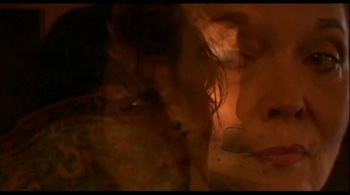
So I was wondering if maybe the old woman was supposed to be the young prostitute in the present, who had moved from Poland over to the US, who is now warning Laura Dern because she knows that her husband is Polish. She’s warning her about the dangers in this strange way.
DT: Yeah, that’s interesting if you look at it that way it seems to make sense, if the Polish stuff would have been 40 or 50 years into the past, which would explain the style change I guess.
RJ: And at one point you do see a 1940s car go by on the street, and a horse and carriage, and they’re wearing these hats which seem old to me. [Laughs]
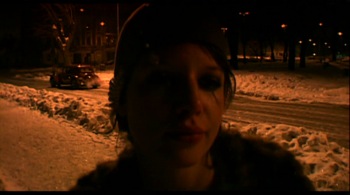
PR: There’s actually this sort of joke, well it’s more East German than Polish, but it’s like East German and Polish colour stock was awful and the only colours you get are like yellow and brown, so whether you’re trying to do sepia or not, that’s all you have. So whatever it is, maybe it’s Soviet, but for sure it’s what got used in East Germany and some Polish films. I’ve seen some Wadja films where the colour is awful, like really bad colour, so that’s probably deliberate as well.
Anyway, I obviously have to see this one again I guess.
RJ: It’s worth at least two viewings.
DT: [Then there’s the question of race]. I know one of the things that bothered you [Peter] about Wild at Heart is that the only black character we see gets his face beat up…
RJ: And here again, in Inland Empire the only non-white characters we see are homeless people.
DT: So again, is that political?
PR: No, I mean, he is out to lunch when it comes to political correctness, it’s almost as though he’s doing it deliberately.
RJ: I would say that, yeah, he is genuinely sort of…
DT: …out to lunch?
RJ – …ignorant, and can be criticized for not being aware of that. Because in Blue Velvet too, the only black characters are kind of these shop clerks in the hardware store.
DT: Tweedle-dee and tweedle-dum.
PR: Although in that context probably that’s correct.
RJ: But yeah, that’s the thing, in the small town Midwest, that’s what it is. But he seems to be carrying that over a little bit. But why did Bobby Ray Lemon, who gets killed at the beginning of Wild at Heart, need to be a black character? I saw no reason for that.
So it’s a bit sketchy.
PR: If he was smart he would say “well yeah, that’s what happens in Hollywood films, the black character always gets killed first.”
DT: Although with the black and the Japanese homeless characters, we assume it to be a representation of reality, but then the camera pulls back and they get up and walk away. They’re actors. So they’re minority actors, not homeless people.
RJ: Yeah, that’s true.
WHERE DO WE GO FROM HERE?DT: We were talking about this on the way out of the screening today: Inland Empire does seem to fit into the form of the trilogy with Lost Highway and Mulholland Drive.
RJ: And there’s a kind of coherent trajectory across his body of work with Wild at Heart as a kind of transitional film. He did the Middle America thing in Blue Velvet, and continued it quite extensively in Twin Peaks. Then you get this Midwestern couple in
Wild at Heart on this road trip trying to get to California. They don’t make it, but then, of course, we arrive in Hollywood with Lost Highway ?? and then ??Mulholland Drive and Inland Empire. Lynch’s characters have made it to California and this is what the films are about now. So there is this geographical trajectory that I like.
DT: But in Inland Empire I think there’s enough of a difference to really suggest perhaps the end of the trilogy, we’ll see. It’ll be nice, as you were saying, to see if he can leave Hollywood and go somewhere else.
PR: Well he does go to Europe in this one.
RJ: Wouldn’t it be funny if he does a series in Europe now?
PR: Well, maybe that’s the only way he’s going to be able to keep making films. That’s the other thing, realistically. I mean Hollywood now, it’s just like bigger and bigger budgets, you know.
DT: Well if he sticks to the digital technology he might be able to get away with it in Hollywood I guess. If he’s got enough people willing to work with him…



